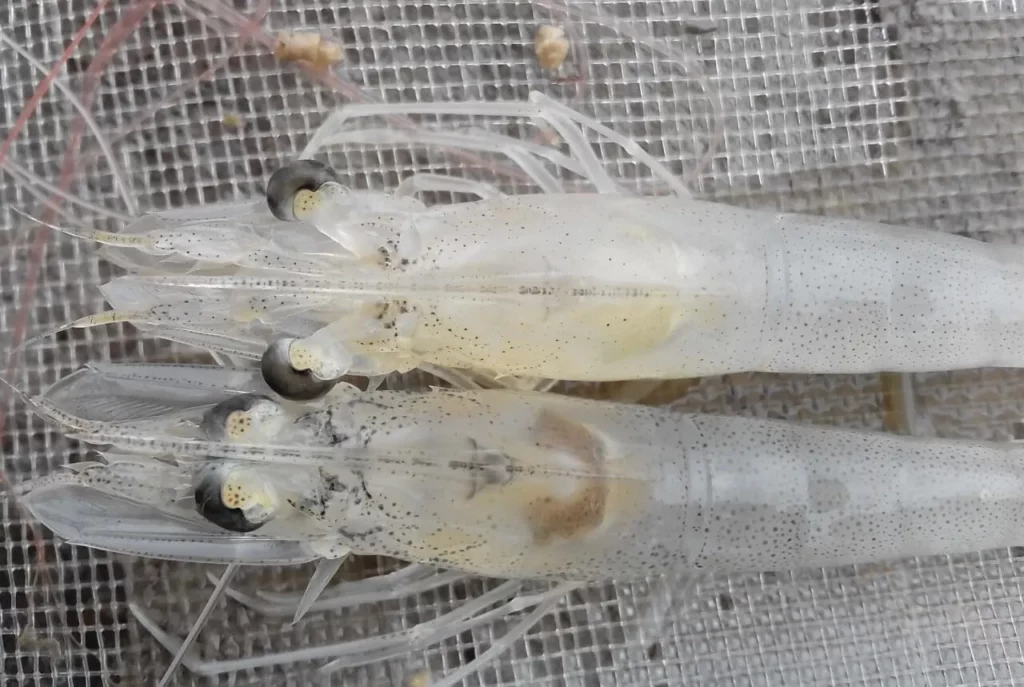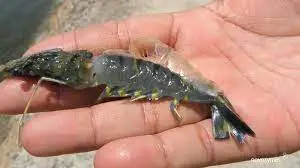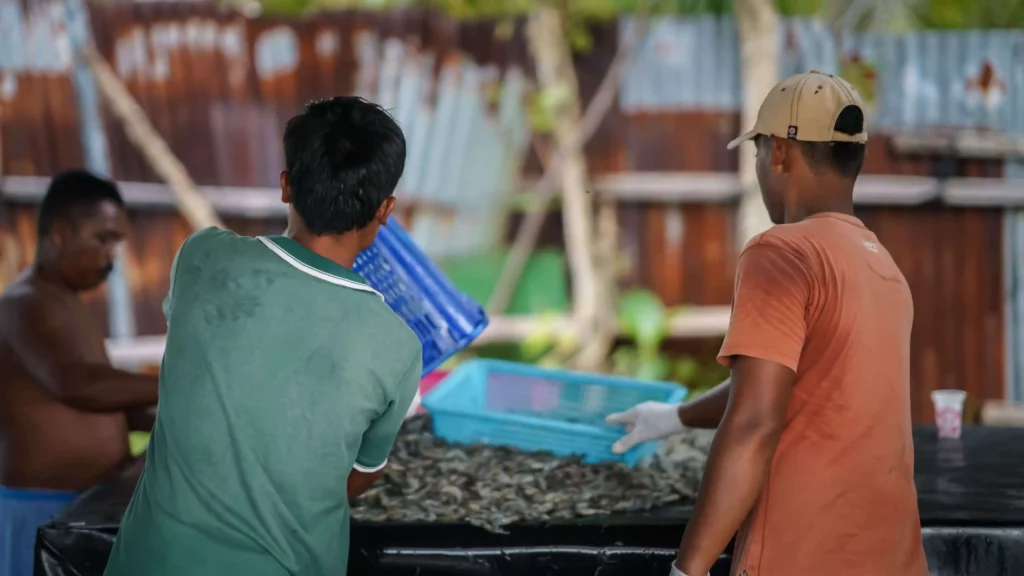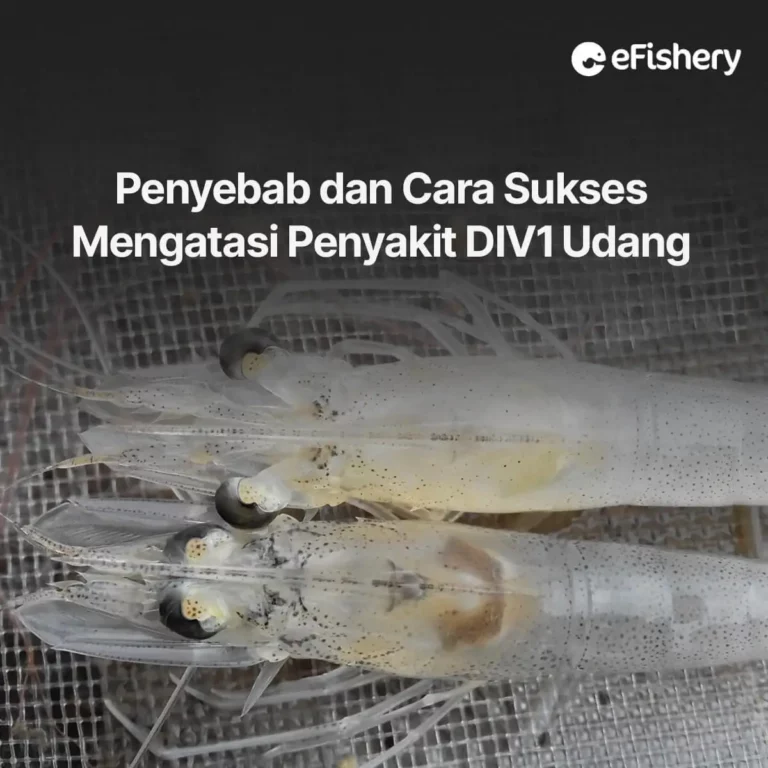Artikel Ini Telah Direview Oleh:

Muhammad Mustofa
Praktisi Budidaya Udang
In 2014 it was recorded that shrimp DIV1 caused huge losses to vannamei shrimp farming in China. DIV1 disease of shrimp or Decapod Iridescent Virus 1 is very dangerous because it has a very high mass mortality rate. Therefore, DIV1 will be very detrimental if it occurs in the shrimp that the farmer has. So, how to avoid losses caused by DIV1? Come on, find out the most complete way to control shrimp DIV1 in this article!
What is DIV1?

DIV1 is an infection that interferes with vannamei shrimp mortality. This virus was first reported to occur in vannamei shrimp in 2014 in China. DIV1 has 2 strains, that is Shrimp haemocyte iridescent virus And Cherax quadricarinatus iridovirus. In shrimp, the main target organs for DIV1 are the hepatopancreas and gills. In addition, DIV1 can also infect haematopoietic tissues, hepatocytes, and lymphoid organs.
DIV1 has a characteristic broad icosahedral shape that can reach a diameter of 150 nm with viral particles containing linear double-stranded DNA. This family of viruses has a broad spectrum of hosts including invertebrates (insecta) as well as poikilothermic vertebrates (fish, amphibians and reptiles). In addition, DIV1 can grow optimally at temperatures from 16-32°C. DIV 1 is not encountered at temperatures > 32°C. DIV1 infection occurs in winter and subsides during summer or autumn when temperatures are higher.
If infected with this virus, shrimp deaths can be found every day, with cumulative deaths of up to 80%. DIV1 has been shown to cause significant mortality (up to 100%) and has resulted in serious economic losses in the aquaculture industry. DIV 1 can attack shrimp in the post larval, juvenile, or sub-adult cycle of shrimp, especially at low temperatures.
This disease is caused by Decapod Iridescent Virus (DIV-1) which is a DNA virus. This virus has the potential to spread to shrimp both in fresh and frozen conditions.
To diagnose DIV1 in shrimp, you can do real-time PCR, In situ hybridization, nested PCR, And in situ DIG-labelling-loop-mediated DNA Amplification. However, among the 4 methods, the most valid and sensitive method is nested PCR and real-time PCR.
Transmission of DIV 1 infection is possible horizontally through cannibalism of infected shrimp or through contact with infected feces. DIV1 has a wide host range and can be transmitted from farmed and/or wild crustaceans. Therefore, polyculture of close species such as P. vannamei (vaname shrimp), M. rosenbergii (prawn prawn) and P. clarkii (red shrimp) pose a serious risk of pathogen transmission. Thus crustacean polyculture is not recommended.
DIV Disease Symptoms1

Before DIV1 attacks the shrimp even further, it's a good idea for you to know some of the symptoms so that treatment can be done immediately. The following are the symptoms that will appear in shrimp infected with the DIV1 virus:
- Its body is reddish in color.
- Color Hepatopancreatic atrophy-it fades.
- The stomach and intestines are empty.
- His swimming movement slowed down.
- His appetite has decreased.
- The shell becomes soft.
- The antenna is broken.
- Its head exhibits a white to pale yellow coloration.
If there are already shrimp in your pond with indications of DIV1 disease, you need to be aware of their transmission. Unfortunately, no scientist has studied the biophysical characteristics of this virus properly, so determining its transmission significance is still very difficult.
How to Overcome DIV1

DIV1 is a quite dangerous disease because it can cause mass death in shrimp up to 80-100%. You certainly don't want this disease to infect shrimp. Therefore, here are ways to control DIV1 disease that you can do:
- Improve biosecurity, including control plans for farm management, quarantine, and DIV1 testing of broodstock and postlarvae shrimp. General biosecurity measures to minimize the spread of fomites (objects on which viruses settle) through cleaning and disinfection are also required.
- Choose shrimp fry that have been certified with SPF (Specific Pathogen Free).
- Discard shrimp if ponds are infected with DIV1, then carry out pathogen disinfection, and dry ponds for at least two months.
- Removing dying or dead individuals from the affected farm to limit spread.
- Using giant prawns (M. rosenbergii) as an indicator species for suspected cases, because the white hematopoietic tissue in diseased giant prawns can be observed easily.
- Polyculture of shrimp with small numbers of fish is highly recommended to prevent DIV1 because diseased shrimp will be removed by predatory fish.
- Do not allow outsiders to approach shrimp ponds because apart from water and the environment, humans can also be a source of pathogens for shrimp ponds.
- DIV1 usually occurs in low temperature ponds. Therefore, water temperature regulation with water recirculation, water level, and the application of lime is necessary.
Consult the Ways of Healing Various Shrimp Diseases at eFarm
Need Help Regarding Shrimp Cultivation Business?
Fill in your personal data in the following form. Our team will immediately contact you via the number cellphone attached. Make sure the data entered is correct.
DIV1 is a disease that can cause high mass mortality in shrimp and will be very detrimental to aquaculture. Therefore, the emergence of DIV1 in ponds must be prevented before it's too late. However, it's not just DIV1 that can harm aquaculture, there are still many shrimp diseases that you need to anticipate their appearance.
To anticipate and cure various shrimp diseases, you can first consult with a shrimp farming expert eFishery for free through features Cultivation Consultation in app eFarm. Apart from being able to consult directly with shrimp farming experts in the application eFarm, You can also use other features to find more information and buy products that support shrimp farming.
Fill in the form above to use the feature Cultivation Consultation!

Muhammad Mustofa - Praktisi Budidaya Udang
Berpengalaman sebagai Asisten Dosen Universitas Pekalongan dan kini menjadi Online Technical Capability Development di eFishery
- https://www.nature.com/articles/s41598-017-10738-8
- https://www.researchgate.net/publication/341600253_Disease_Advisory_Decapod_iridescent_virus_1_DIV1_an_emerging_threat_to_the_shrimp_industry
- https://www.woah.org/fileadmin/Home/eng/Internationa_Standard_Setting/docs/pdf/Aquatic_Commission/A_DIV1_disease_card.pdf
